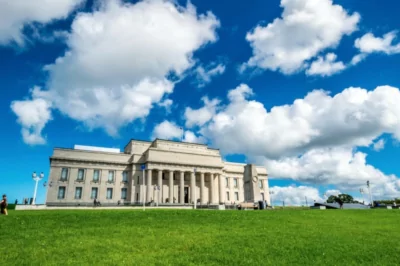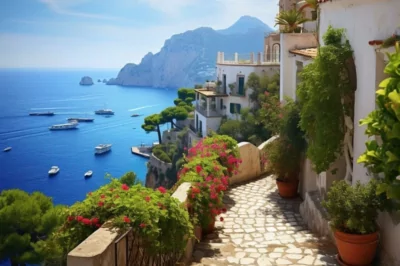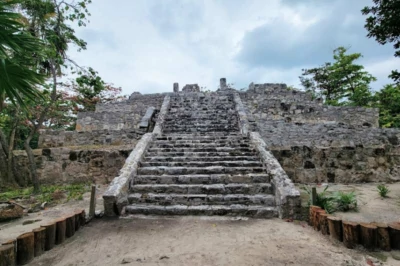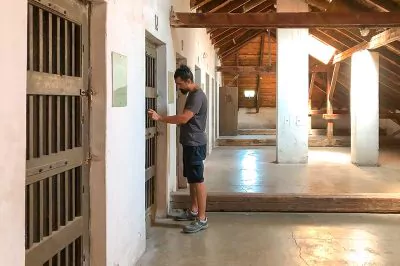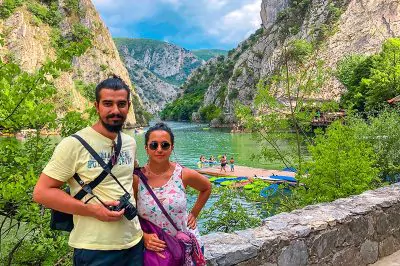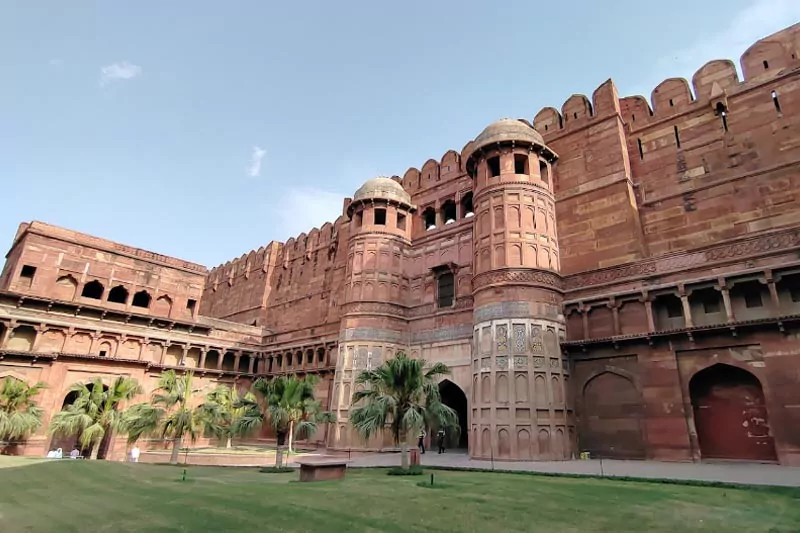
Agra Fort: Rich Cultural Heritage and Iconic Red Fort
Agra Fort is a majestic UNESCO World Heritage Site located in the historic city of Agra, India. This sprawling fortress, also known as the Red Fort of Agra, was built in the 16th century during the reign of the powerful Mughal Emperor Akbar. It is a true testament to the grandeur and opulence of Mughal architecture, and is a must-visit destination for anyone traveling to India.
Agra Fort served as the main residence of the Mughal emperors until 1638, and was witness to some of the most important events in Indian history.
From battles and imprisonments to grand celebrations and cultural fusion, the fort has seen it all. Its design is a perfect fusion of Indian, Persian, and Islamic architectural styles, making it a truly unique and breathtaking monument.

Agra Fort history in India
Agra Fort is one of the most important and well-preserved Mughal forts in the country. Agra Fort has a rich history that spans several centuries and is deeply intertwined with the rise and fall of the Mughal Empire.
The history of Agra Fort dates back to the 11th century when it was initially a brick fort built by the Rajputs. However, it was in 1526 that the Mughal Emperor Babur captured Agra and the fort. Babur’s grandson, Akbar, recognizing the strategic importance of Agra, decided to make it his capital and rebuild the fort using red sandstone in 1565. The construction continued under the reign of Akbar’s son Jahangir and grandson Shah Jahan, with each emperor adding new structures and buildings to the fort complex.
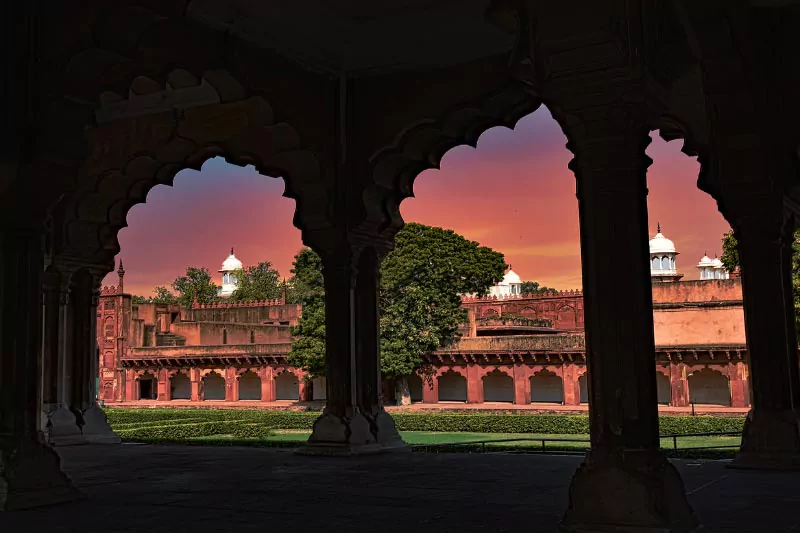
Under Shah Jahan’s rule, Agra Fort underwent significant transformations as he had a fondness for marble and white stone. He constructed several white marble buildings within the fort, including the Moti Masjid (Pearl Mosque), the Diwan-i-Khas (Hall of Private Audiences), and the Musamman Burj, from where he was imprisoned by his son Aurangzeb later in life.
Agra Fort was not only a royal residence but also a military stronghold and a center of political power. Several important events in Mughal history took place within its walls, such as the crowning of Shah Jahan and the imprisonment of his father, Jahangir. The fort also witnessed the decline of the Mughal Empire, as it was captured by various invaders, including the Marathas and the British.
Blend of Indo-Islamic architecture
The unique blend of Indo-Islamic architecture is a remarkable aspect of many historical monuments in India, and Agra Fort is no exception. This architectural style is a result of the fusion of native Indian architectural elements with Islamic designs and patterns brought by the Mughals and other Muslim rulers. The synthesis of these two styles has led to some of the most stunning and awe-inspiring structures in India.
Things to see in Agra Fort
In Agra Fort, the Indo-Islamic architectural style is evident in the various buildings, palaces, and mosques within the complex. Some notable examples are:
Jahangir Palace
Built by Emperor Akbar for his son Jahangir, this palace is a perfect example of the fusion of Hindu and Islamic architecture. The palace features a blend of red sandstone and intricate white marble carvings, with Hindu motifs like lotus flowers and elephants integrated with Islamic geometric patterns.
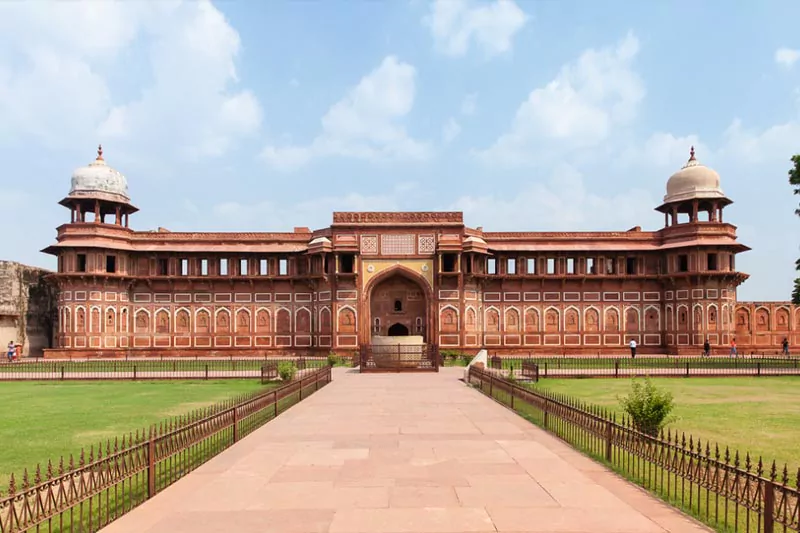
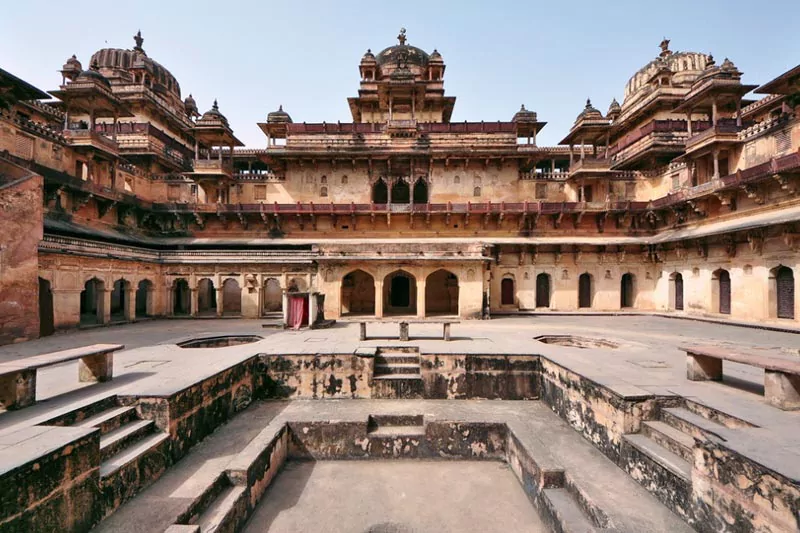
Diwan-i-Aam (Hall of Public Audiences)
The Diwan-i-Aam is an open hall where Emperor Shah Jahan used to hold public audiences. It displays a mix of Persian and Indian architectural elements, such as the use of multiple chhatris (dome-shaped pavilions) and the incorporation of jali screens, which are perforated stone screens with intricate geometric designs.
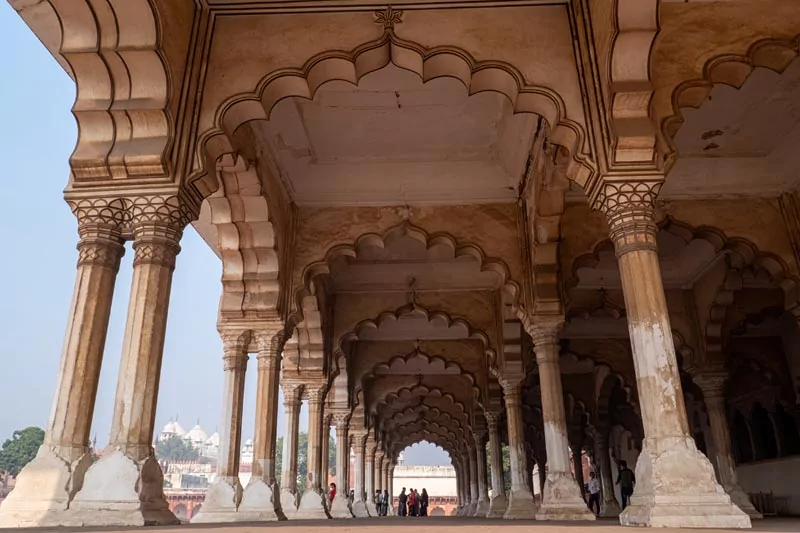
Diwan-i-Khas (Hall of Private Audiences)
This hall, used for private meetings with important dignitaries and court members, showcases the delicate blend of Islamic and Indian architectural styles. It is particularly famous for its central pillar, which is carved from a single block of white marble and features intricate floral patterns and a blend of Hindu and Persian motifs.
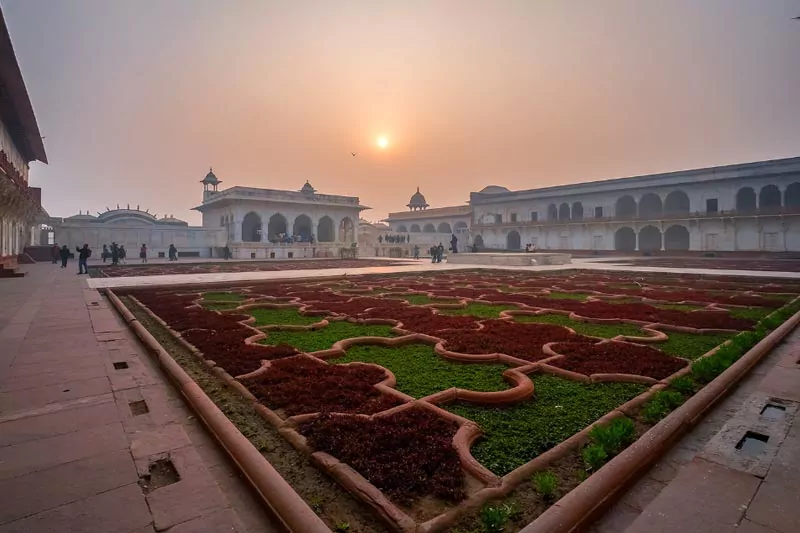
Moti Masjid (Pearl Mosque)
The Moti Masjid is a remarkable architectural gem built by Emperor Shah Jahan. This elegant mosque, constructed entirely of white marble, showcases the perfect balance of Islamic architecture and subtle Indian influences.
The mosque’s beauty is characterized by its graceful arches, intricate calligraphy, and stunning domes. Additionally, the structure incorporates Indian decorative elements, such as the lotus flower, reflecting the cultural synthesis of the era.
Sheesh Mahal (Palace of Mirrors)
The Sheesh Mahal, or Palace of Mirrors, is an exquisite example of the Mughal Empire’s luxurious architecture. The walls and ceilings of this palace are adorned with countless tiny mirrors, creating a dazzling and enchanting effect when illuminated.
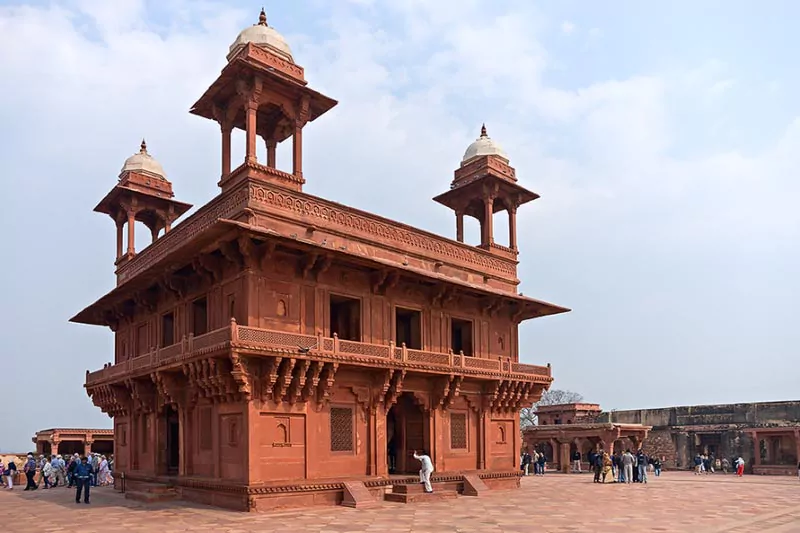
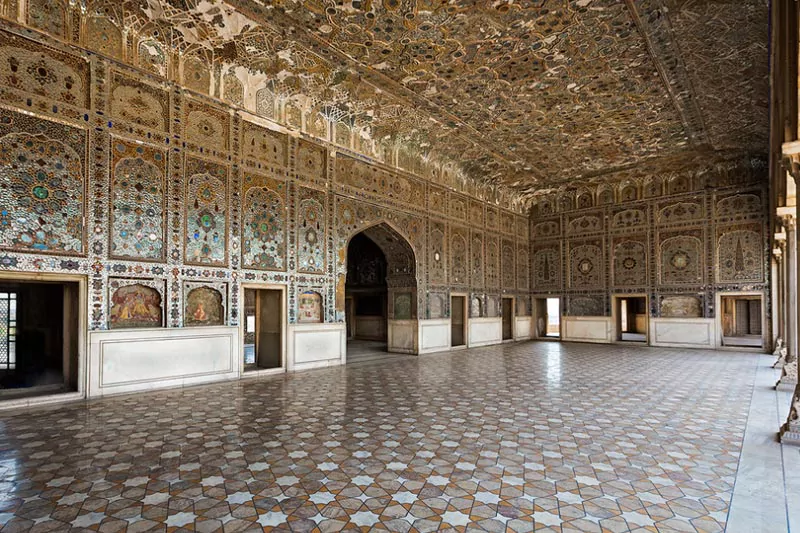
The design of the Sheesh Mahal encompasses a blend of Persian and Indian artistic elements, with detailed floral patterns and mesmerizing geometric designs. This enchanting palace offers visitors a glimpse into the opulence and grandeur of the Mughal period.
Best time to visit
The ideal time to visit Agra Fort is during the cooler months, from October to March. During this period, the weather is pleasant, making it comfortable for sightseeing and exploration.
April to June marks the summer season in Agra, with temperatures often reaching up to 45°C (113°F). The heat can make it uncomfortable to visit the fort during these months. The monsoon season, from July to September, brings heavy rainfall, which may hinder outdoor activities and sightseeing.
To make the most of your visit to Agra Fort, it’s recommended to start early in the day to avoid the afternoon heat and crowds. This will give you ample time to explore the fort and appreciate its magnificent architecture and rich history.
Tips for visiting Agra Fort:
- Start early: Arrive at the fort early in the morning to avoid large crowds and the afternoon heat, especially during the hot summer months.
- Hire a guide: Consider hiring a knowledgeable local guide to provide you with a deeper understanding of the fort’s history, architecture, and significance. Alternatively, you can use audio guides available at the entrance.
- Dress appropriately: Dress modestly, as Agra Fort is a historical monument and has religious structures within its premises. Wear comfortable clothing and shoes suitable for walking and climbing stairs.
- Stay hydrated: Carry a water bottle with you, particularly during the summer months, to stay hydrated while exploring the fort.
- Don’t rush: Take your time to appreciate the fort’s architecture, intricate carvings, and the various structures within its walls. Allocate sufficient time to explore the Diwan-i-Aam, Diwan-i-Khas, Jahangir Palace, and other notable buildings.
- Photography: Bring a camera or smartphone to capture the beauty of the fort and its surroundings. However, be respectful of any photography restrictions within specific areas of the fort.
- Combine your visit: Plan your trip to Agra to include other nearby attractions like the Taj Mahal, Mehtab Bagh, and Itmad-ud-Daulah (Baby Taj), making the most of your time in the city.
- Be aware of scams: Be cautious of touts and scams around tourist attractions. Stick to officially licensed guides and vendors for a hassle-free experience.
How to get to Agra Fort?
Agra Fort is a fort in the city of Agra in the northern Indian state of Uttar Pradesh. Located along the shores of the Yamuna River, the fort stands approximately 2.5 kilometers to the northwest of the globally renowned Taj Mahal. You can use the following options to reach Agra Fort.
- By train: Agra is served by multiple train stations, the main one being Agra Cantt Station (AGC). Agra boasts excellent connectivity to numerous cities across India, including Delhi, Mumbai, Kolkata, and Jaipur. Once you arrive at the railway station, you can hire a taxi, use an auto-rickshaw or take a bus to reach the fort, which is about 5-6 kilometers from Agra Cantt Station.
- By Road: Agra has road connectivity to many major Indian cities including Delhi (about 230 kilometers), Jaipur (about 240 kilometers) and Lucknow (about 330 kilometers). To reach Agra, you can choose to drive, hire a taxi or travel by bus. Once in the city, you will again need to use means of transportation such as taxis, auto-rickshaws and buses.
When planning your visit, remember that Agra Fort is open every day from sunrise to sunset. It is advisable to set aside at least a few hours to fully explore the fort and immerse yourself in its rich history and breathtaking architecture.
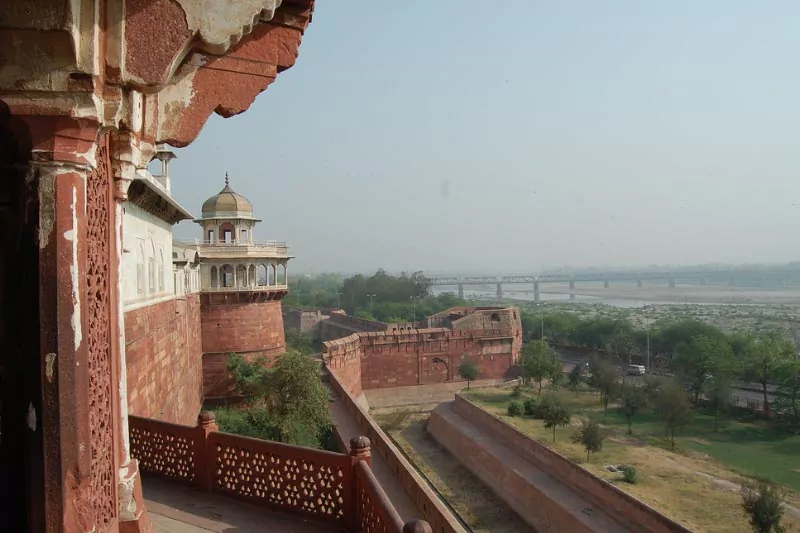
How to reach Agra Fort from Taj Mahal?
Agra Fort is situated about 2.5 kilometers northwest of the Taj Mahal, making it relatively easy to reach from the iconic monument. Here are a few options for traveling between the Taj Mahal and Agra Fort:
- Auto-rickshaw: Auto-rickshaws are a convenient and affordable means of transportation between the Taj Mahal and Agra Fort. The journey should take approximately 10-15 minutes, depending on traffic. Be sure to negotiate the fare before starting the ride.
- Cycle-rickshaw: For a more leisurely and eco-friendly option, you can hire a cycle-rickshaw. This mode of transportation is slower than an auto-rickshaw, but it allows you to take in the surroundings and experience the local vibe. The ride should take around 20-30 minutes.
- Taxi: Taxis are another option for traveling between the Taj Mahal and Agra Fort. You can either book a taxi through a mobile app like Ola or Uber or hire one from a taxi stand. The journey should take about 10-15 minutes, depending on traffic conditions.
- Walking: If you’re up for some exercise and prefer to explore on foot, you can walk between the Taj Mahal and Agra Fort. The distance is walkable, and the journey should take about 30-45 minutes, depending on your pace.
FAQs
How long does it take to visit Agra Fort?
It typically takes around 2-3 hours to visit and explore Agra Fort. However, the duration may vary depending on your interest in the fort’s history, architecture, and various attractions. If you want to take a more leisurely approach and thoroughly appreciate the fort’s beauty, you might want to allocate 3-4 hours for your visit.
Conclusion
In conclusion, Agra Fort is a magnificent symbol of India’s rich history and architectural prowess. As a UNESCO World Heritage site, it offers visitors a unique blend of Indo-Islamic architecture and a glimpse into the grandeur of the Mughal Empire.
With its strategic location in Agra, well-connected to major Indian cities, the fort is easily accessible and a must-visit destination for anyone interested in exploring India’s cultural heritage.
To make the most of your visit, plan your trip during the cooler months and start early in the day to appreciate the beauty and significance of this remarkable monument.
